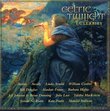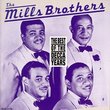| All Artists: Respighi, Toscanini, NBC Title: Respighi: Pines of Rome/Fountains of Rome/Roman Festivals Members Wishing: 0 Total Copies: 0 Label: RCA Release Date: 5/25/1990 Genre: Classical Styles: Forms & Genres, Theatrical, Incidental & Program Music Number of Discs: 1 SwapaCD Credits: 1 UPC: 090266026227 |
Search - Respighi, Toscanini, NBC :: Respighi: Pines of Rome/Fountains of Rome/Roman Festivals
 | Respighi, Toscanini, NBC Respighi: Pines of Rome/Fountains of Rome/Roman Festivals Genre: Classical
|
Larger Image |
CD DetailsSimilarly Requested CDs
|
CD ReviewsThe Conductor for Whom the Roman Festivals Was Written! 10/10/1998 (5 out of 5 stars) "Toscanini gave the world premiere of the "Roman Festivals" tone poem in New York with the Philharmonic-Symphony in 1929. At the time it must have been considered harsh stuff by the conservative concert-going audiences (who were not as yet very comfortable with the jazz experiments of Gershwin or the almost "avant garde" ballets by Stravinsky.) While the critics have always considered the three tone poems of Respighi's Roman Trilogy to be second-rate potboilers, audiences and record buyers keep coming back for more, and the world's finest conductors, from Reiner to Karajan, are happy to satiate our ears with the ripe orchestration, colorful instrumental treatments, and lyrical Italianate melodies of these evergreen works.The Toscanini recordings have never sounded as fine as they do on this pristine, authentic mono CD transfer. Earlier Red Seal LP recordings had variable quality, and the sixties budget disks from RCA Victrola were thin and wiry. There was a falsified fake stereo issue from RCA midway during the stereo LP era, but it could not hold a candle to the solidity, transient response, and clarity of these disks.Warning: if you have a hi-fi system with very "bright" sounding speakers, you may find this CD a bit shrill. It can be tamed with your treble control or equalizer if necessary. Otherwise, it is almost perfect in sound quality, nearly the equal of the best technology in use at any record company in the early fifties in the "Pines" and "Fountains"; only the 1949 early magnetic tape recording of the "Feste Romane" is a bit compressed sounding at the loudest passages (though it is still very robust and powerful.) "Break the equipment!" the Maestro is said to have shouted at his timorous engineers who recoiled at the magnitude of sound produced by the NBC musicians in full cry. Well, nothing broke and the recordings became classics. Incidentally, earlier the "Roman Festivals" performance by Toscanini with the great Philadelphia Orchestra, also on the RCA / BMG Series on 60311-2 RG, is severely flawed by noise and distortion, which are totally absent in the relatively smooth and modern-sounding taping of 1949 in this present CD.Interpretatively, if you like Ormandy or Karajan in the Pines / Fountains, you may find Toscanini a bit brusque. But if you enjoy the Reiner performance with the Chicago Symphony (a Victor Living Stereo classic) you may likely find Toscanini a bit more yielding in lyrical moments. However, nobody has EVER produced a more intense and dramatic interpretation of "Feste Romane"!" Toscanini plays Respighi's Roman Cycle Robert E. Nylund | Ft. Wayne, Indiana United States | 01/05/2004 (4 out of 5 stars) "Arturo Toscanini (1867-1957) not only conducted the 1929 world premiere of Ottorino Respighi's "Roman Festivals" (also known as "Feste Romana"), he was a close friend of the frail composer, who struggled with heart problems until his death in 1936. Indeed, when Toscanini was threatened by Mussolini's "Brown Shirts" in 1931, it was Respighi who played a key role in preventing the Fascists from further harming the Maestro, after some of them had roughed up the conductor. (That came after Toscanini's repeated refusals to play any of the Fascist songs in his Italian concerts.)"Roman Festivals" was the last of the three symphonic poems that make up Respighi's Roman Cycle. It was also the longest and most spectacular of the three colorfully-orchestrated works. Toscanini had already recorded it in the early 1940's with the Philadelphia Orchestra in sessions which were nearly sabotaged by problems in the mastering process. (Despite some occasional distortions, the digitally remastered Philadelphia Orchestra recordings of 1941-42 are worth hearing.)Toscanini's 1949 recording with the NBC Symphony was made in Carnegie Hall and, typically, he insisted that the engineers get every bit of the spectacular crescendos that are so typical of Respighi's music. When told that the tape equipment could only handle so much volume, Toscanini said he didn't care if they broke it. Nevertheless, RCA Victor did a remarkable job in recording a powerful performance of this often dramatic music. It includes a vivid depiction of early, persecuted Christians facing the lions in the Coliseum, complete with a terrible roaring and the eventual bloody massacre of the martyrs. Toscanini was particularly insistent in faithful recreating Respighi's tone painting. He also succeeded admirably in the comic epics during the final "Epiphany" section in which the music becomes almost ludicrous, bordering on the burlesque, and reminded this writer of a Fellini comedy.Earlier, Respighi included one of the most amazing orchestral crescendos ever composed in "Pines of Rome." In Toscanini's recording, we are overwhelmed with the gradual increase in volume as the composer depicts a procession of Roman soldiers through the pine forest on the Appian Way. In an earlier performance of this music, big bandleader Tommy Dorsey marveled at how Toscanini was able to gradually build the volume to the spectacular end."Pines" also includes a very wonderful section in which we hear a nightingale singing in a pine tree. Respighi was quite innovative here because he instructed that a grammophone recording of a nightingale be played at the appropriate time. This definitely adds to the magical moments. Incidentally, Toscanini included "Pines of Rome" in his first concert with the New York Philharmonic, also in Carnegie Hall, in 1926. In January 1945, when Toscanini appeared as a guest conductor with the Philharmonic, he again included "Pines" in a concert that included all of the works from his 1926 performance. Fortunately, the 1945 concert was recorded.The Roman Cycle had begun with "Fountains of Rome," a really diverse and colorful work. Much of the music is relatively quiet, serene, and even contemplative, but Respighi builds to another crescendo as he depicts the famous Trevi fountain, giving the impression of almost overwhelming cascades of water. Toscanini's performance is more than equal to the music.Some may complain that these recordings, spanning the years 1949 to 1953, are not up to present day standards. For their time, however, they were actually demonstrations of "high fidelity" and the performances remain the most faithful to Respighi's intentions. Digital remastering has definitely added to the impact of these milestone recordings." Toscanini, -the Maestro- in one of his highest musical achie Hiram Gomez Pardo | Valencia, Venezuela | 03/24/2010 (5 out of 5 stars) "
At the moment to regard the highest artistic peaks of the Maestro Toscanini, five names seem to appear immediately: Beethoven, Debussy, Wagner, Mendelssohn and Verdi. But usually, we tend to forget the enormous and titanic effort undertaken by Toscanini for making of Respighi the most pyramidal composer of the Italian modernism. Many others conductors pushed on this way: De Sabata, Reiner, Kertesz and Ormandy, of course. Nevertheless, nobody but him could express Roma's pines or Roman parties with such majestic splendor and radiant expressiveness. It could be said that Toscanini was probably the best musical Ambassador Respighi had. If we can think about the most relevant Western composer who is more narrowly linked to Rimsky Korsakov, Ottorino Respighi is the indicated. Nobody like him has been more capable to develop such polished and mystic aestheticism that differs from Ildebrando Pizetti, for instance. As a matter of fact his harmonic structure is in the half of the road between the languid colorfulness and the Impressionist ambiance. The historical relevance of these records are by themselves a true landmark among the best achievements of Arturo Toscanini. Don't miss it. " |

 Track Listings (12) - Disc #1
Track Listings (12) - Disc #1







